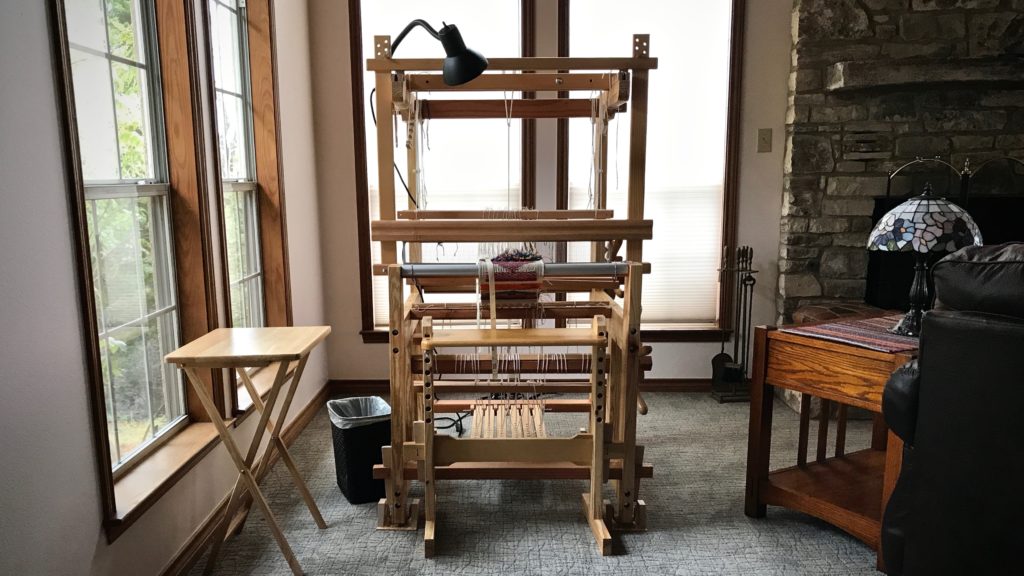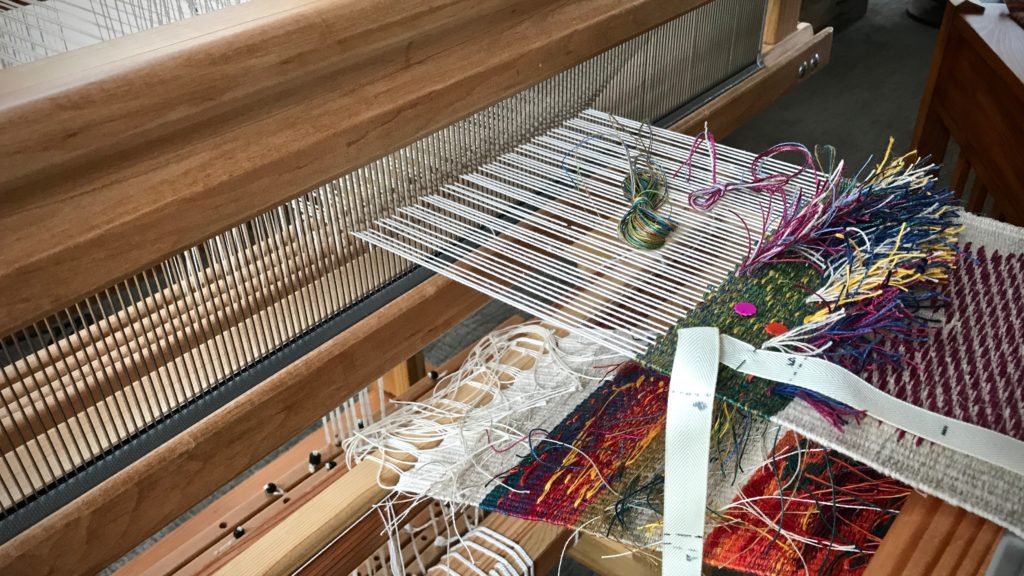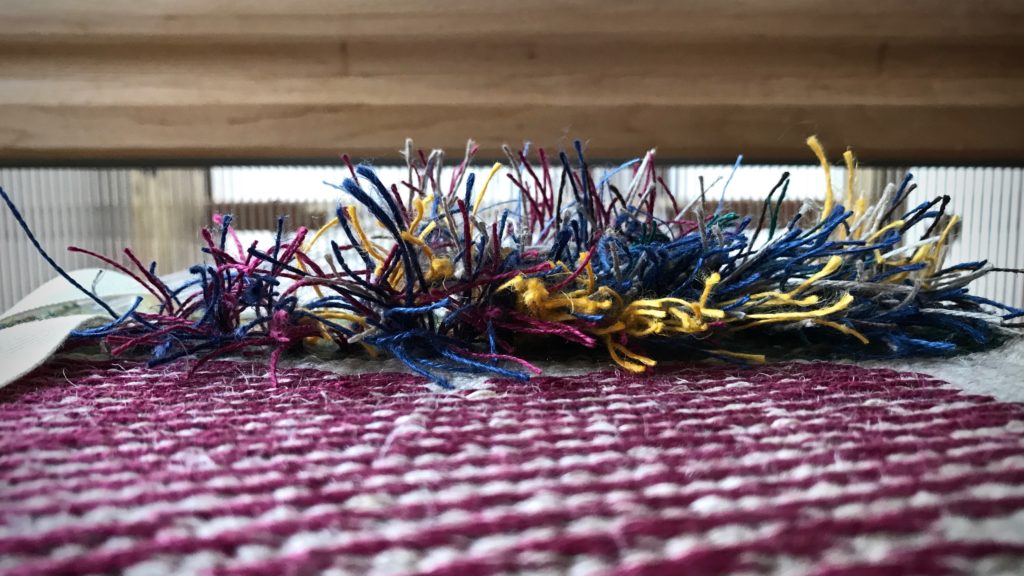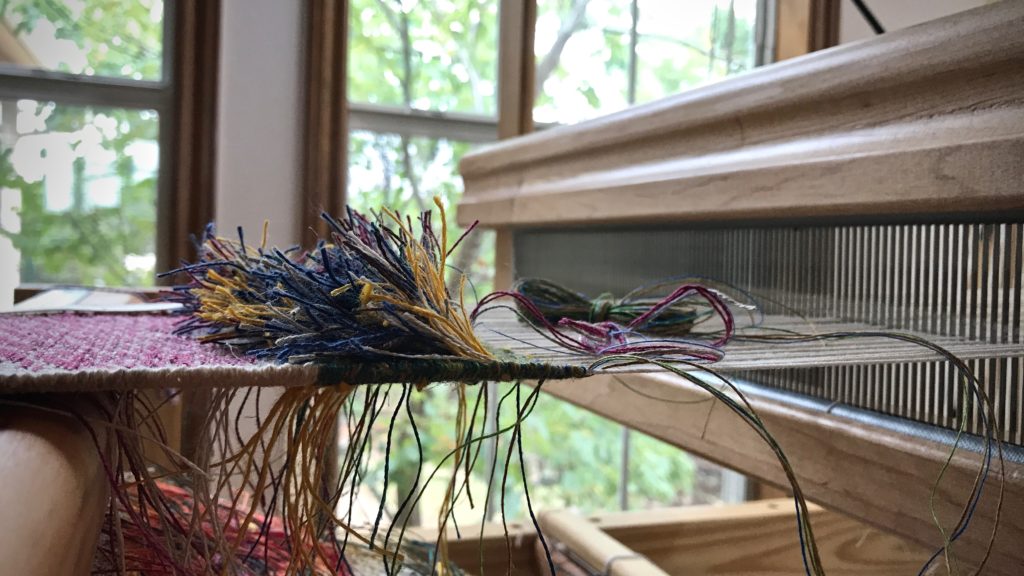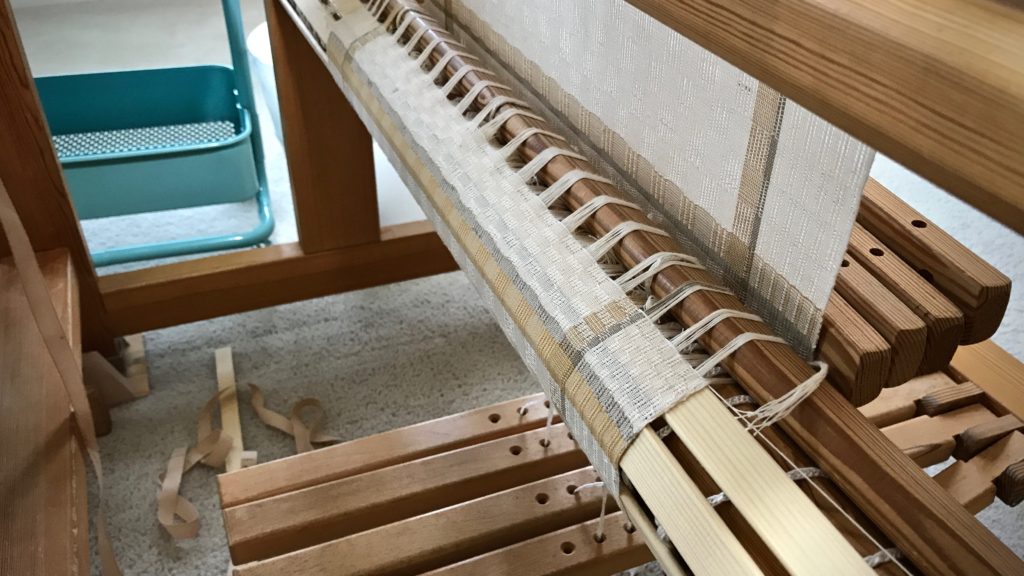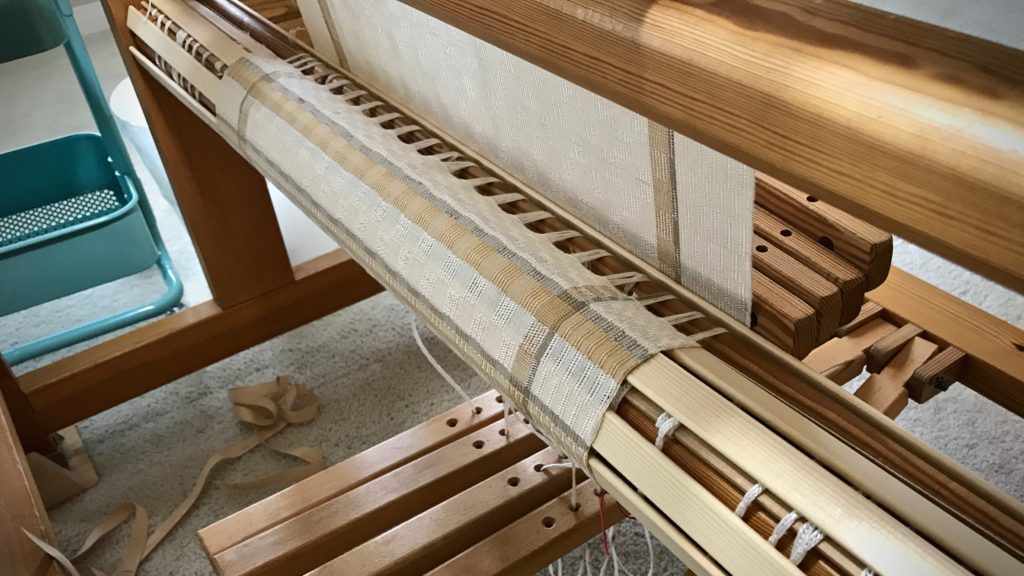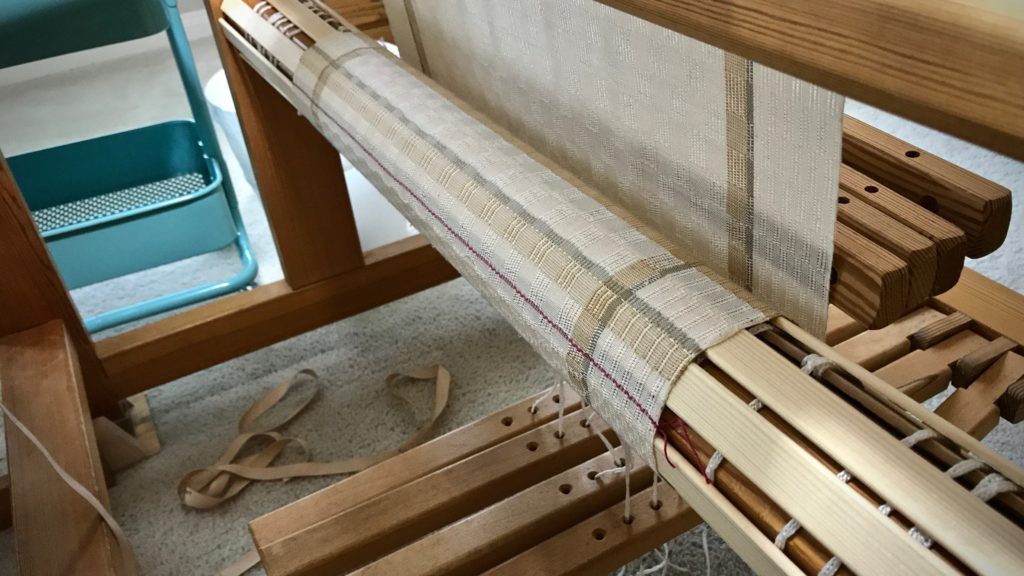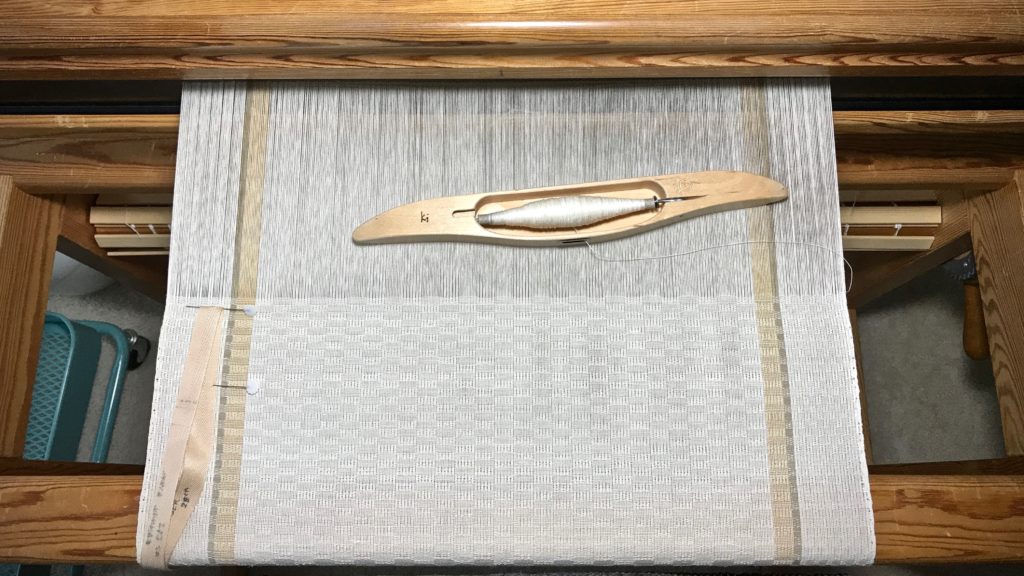It thrills me to weave rag rugs again! This is spaced rep, and I am weaving almost the full width of this 100 cm (39″) Glimåkra Ideal. That means there are zillions of threads involved. 724 warp ends, to be exact.
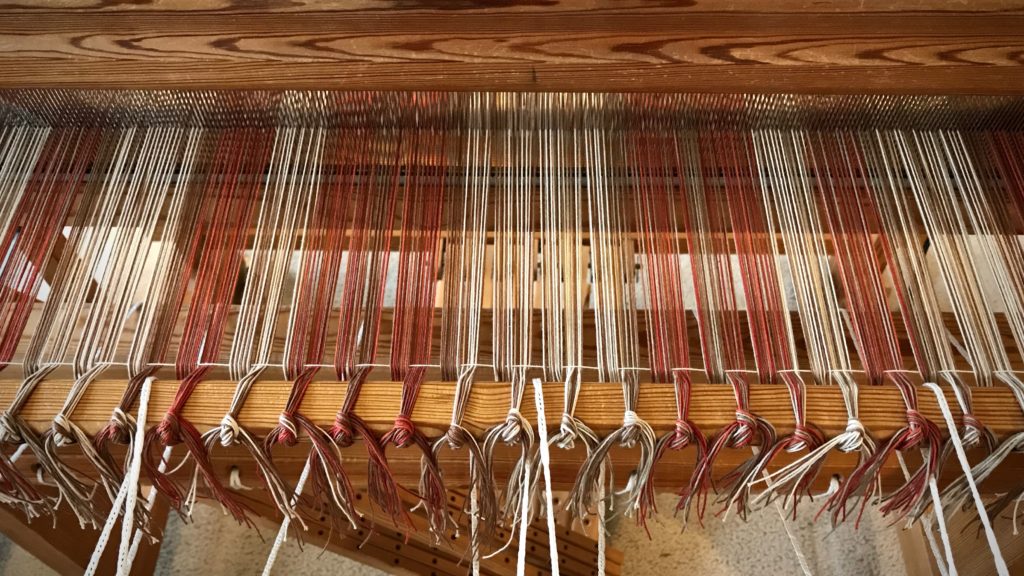
This is a type of warp rep, but it is not completely warp faced because there is space between the warp ends. It is also similar to the thick-and-thin weaving I have done with hand towels. Thick weft (fabric strips) alternates with thin weft (12/6 cotton rug warp). Pattern blocks change with two thick picks in a row.
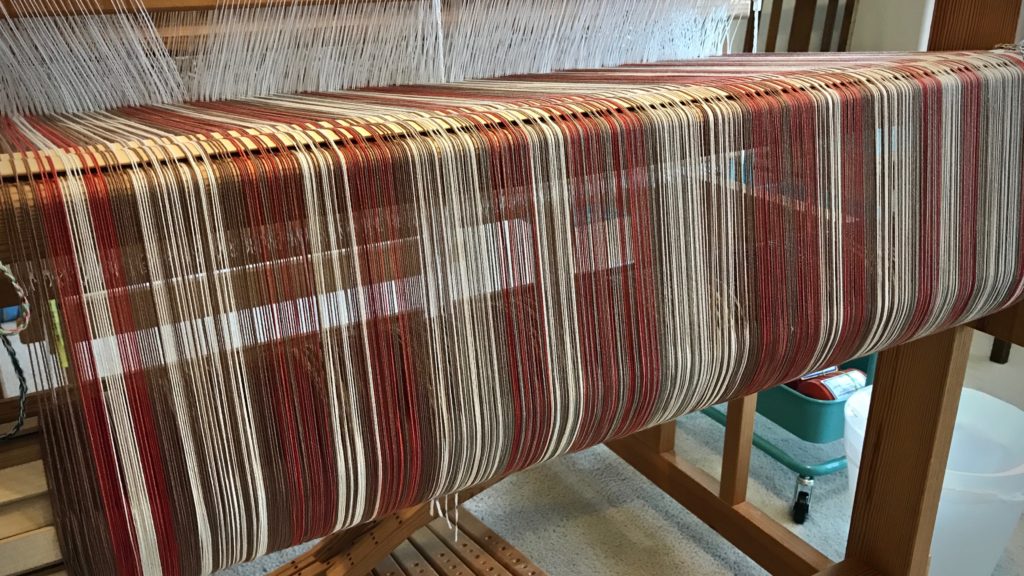
With all those threads these rugs are made to last. They will outlast me, I’m sure. And my children, and grandchildren. But eventually, even these rugs will wear out.
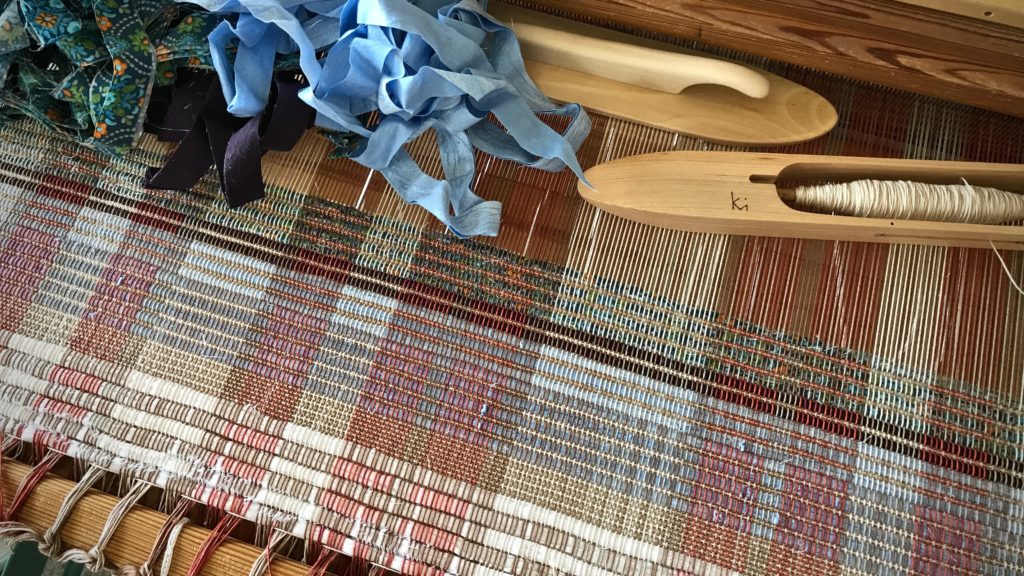
Everything but God ages and wears out. Even this earth and the heavens that we see will someday wear out. That’s when it’s good to know the Maker. He keeps those who have made him their trust. And, when we wear out and come to and end, he has a place for us where we will enjoy him forever.
May you make things that last and last.
Happy weaving,
Karen



